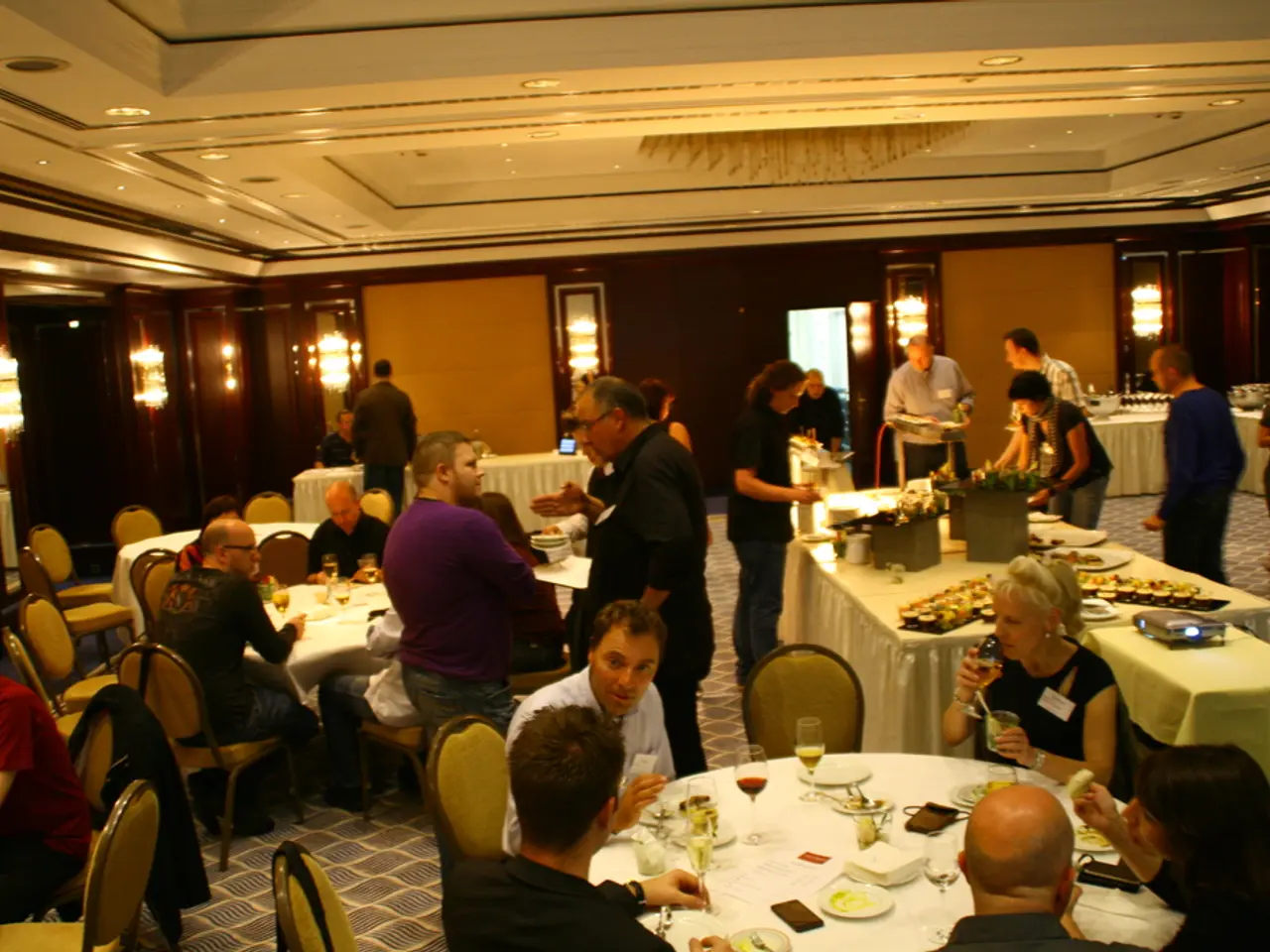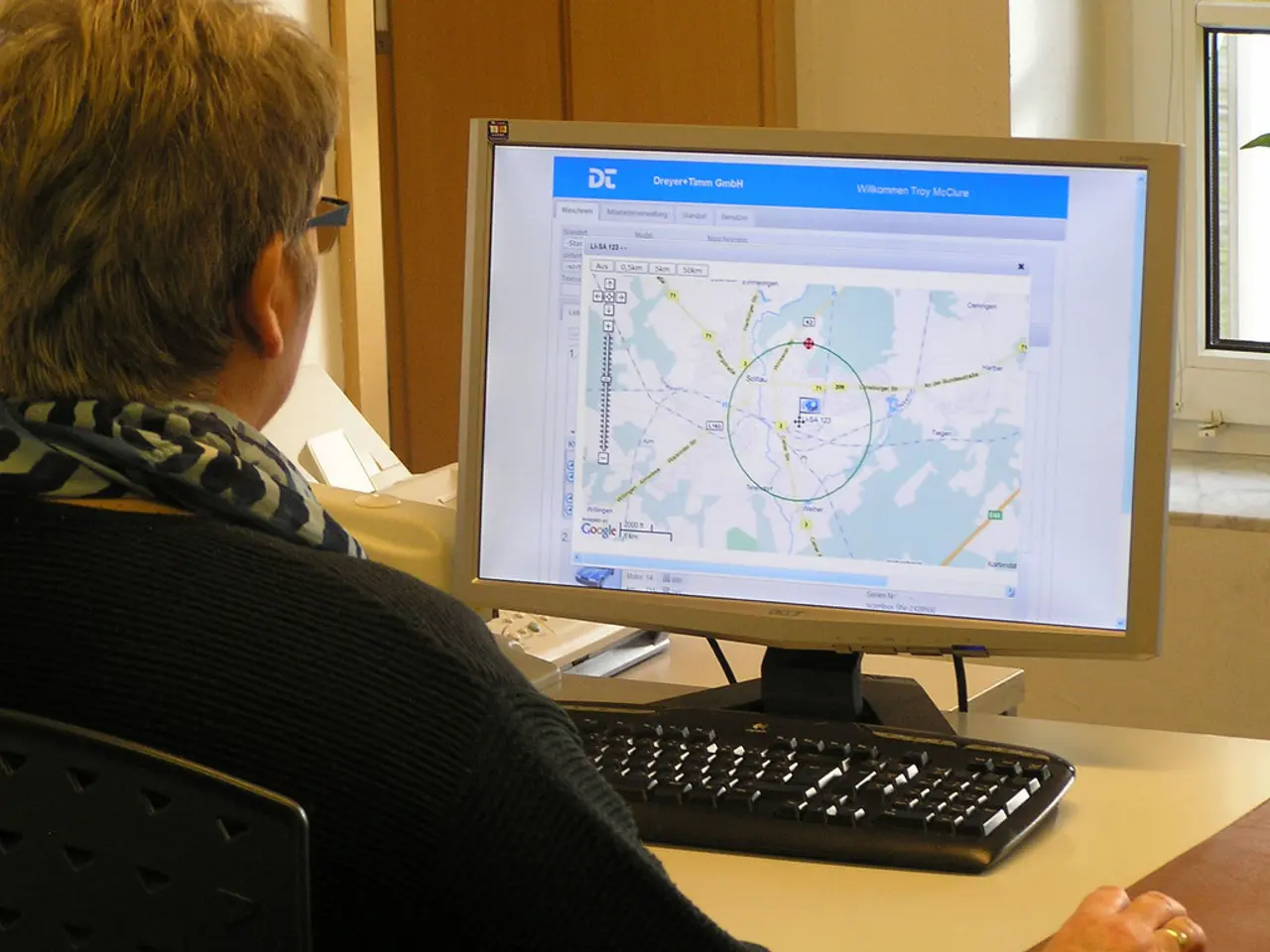Mobile food delivery services see a surge in growth within the UAE and Saudi Arabia, expecting a 30% increase by 2025.
Mobile Food Delivery Market Booms in UAE and Saudi Arabia
The mobile food delivery market in the UAE and Saudi Arabia is experiencing a significant surge, with mobile orders accounting for over 80% of all food delivery transactions in both countries.
According to a report by Syrve MENA, a leading restaurant software provider, mobile food delivery orders in these regions surged by 30% year-over-year in the first half of 2025. By the end of 2025, it is projected that over 80% of food delivery orders will be made via mobile devices, marking a natural evolution in two of the world's most digitally connected regions.
The dinner rush between 8:00 PM and 11:00 PM remains the busiest time slot for most cuisines, except for Arabic restaurants, where traditional breakfasts are most popular between 10:00 AM and noon. However, during Ramadan, there was a notable spike in food orders, with March 2025 seeing a significant increase.
Growth Projections for the online meal delivery market in the UAE and Saudi Arabia are promising. In the UAE, the market is forecasted to grow at a compound annual growth rate (CAGR) of around 10.2% through 2033, driven by a tech-savvy population and demand for loyalty perks and faster delivery. In Saudi Arabia, the market is larger and expected to grow faster, with a projected CAGR of 15.4% through 2030, due to rapid urbanization, high smartphone penetration, and a rising middle class.
Despite this momentum, the market in both countries is highly competitive and saturated, with numerous delivery platforms vying for market share. Leading food aggregators like Talabat, Deliveroo, HungerStation, and Jahez control a substantial share of mobile orders—about 75%. However, intense competition and operational costs (e.g., driver wages) pose challenges for profitability and sustainability beyond the next two to three years.
Additional Trends shaping the future include increasing automation and digital transformation within foodservice, use of data analytics by companies to optimize menus and personalize offerings, growth of subscription meal kits and ghost kitchens, and expansion beyond food delivery to include pharmaceuticals and groceries by platforms, broadening their service ecosystems.
As the market matures, competitive pressures will require players to innovate and optimize to sustain growth and profitability. Alexander Ponomarev, CEO at Syrve MENA, predicts that mobile-based delivery will remain central to foodservice strategy in both the UAE and Saudi Arabia as they continue to develop digitally and increase mobile order volumes by over 10% year-on-year.
Kushmita Bose, a content writer specializing in unraveling tech revolutions and bringing a brand's journey to life, notes that the continued dominance of food aggregator apps and restaurants embracing automation and AI is paving the way for a frictionless future in foodservice in both the UAE and Saudi Arabia. Bose thrives on transforming ideas into captivating stories and when she's not busy crafting content, you'll probably find her daydreaming about her next travel adventure.
In summary, the UAE and Saudi Arabia represent some of the fastest-growing and most digitally advanced markets for mobile food delivery in the Middle East, with strong near-to-mid term growth forecasts. However, as the market matures, competitive pressures will require players to innovate and optimize to sustain growth and profitability.
[1] Syrve MENA Report, 2025. [2] TechCrunch, 2025. [3] Arabian Business, 2025. [4] Statista, 2023. [5] FoodTech, 2025.
- The burgeoning mobile food delivery market in the UAE and Saudi Arabia is not limited to food; it's also expected to expand beyond food delivery to include pharmaceuticals and groceries.
- Kushmita Bose, a content writer with expertise in tech revolutions, believes that the employment of automation and AI by foodservice companies is creating a streamlined, frictionless future for food delivery in both the UAE and Saudi Arabia.
- Despite the rosy growth projections for the online meal delivery market in the UAE and Saudi Arabia, the market remains fiercely competitive with numerous delivery platforms competing for market share.
- FoodTech, a leading source for food technology news, suggests that digital transformation within foodservice, use of data analytics, and the emergence of subscription meal kits and ghost kitchens are instrumental trends shaping the future of food delivery in the UAE and Saudi Arabia.
- In her writing about the impact of technology on lifestyle, Kushmita Bose often dreams about her upcoming travel adventures, as she sees parallels between embracing new digital trends and exploring new lands.




